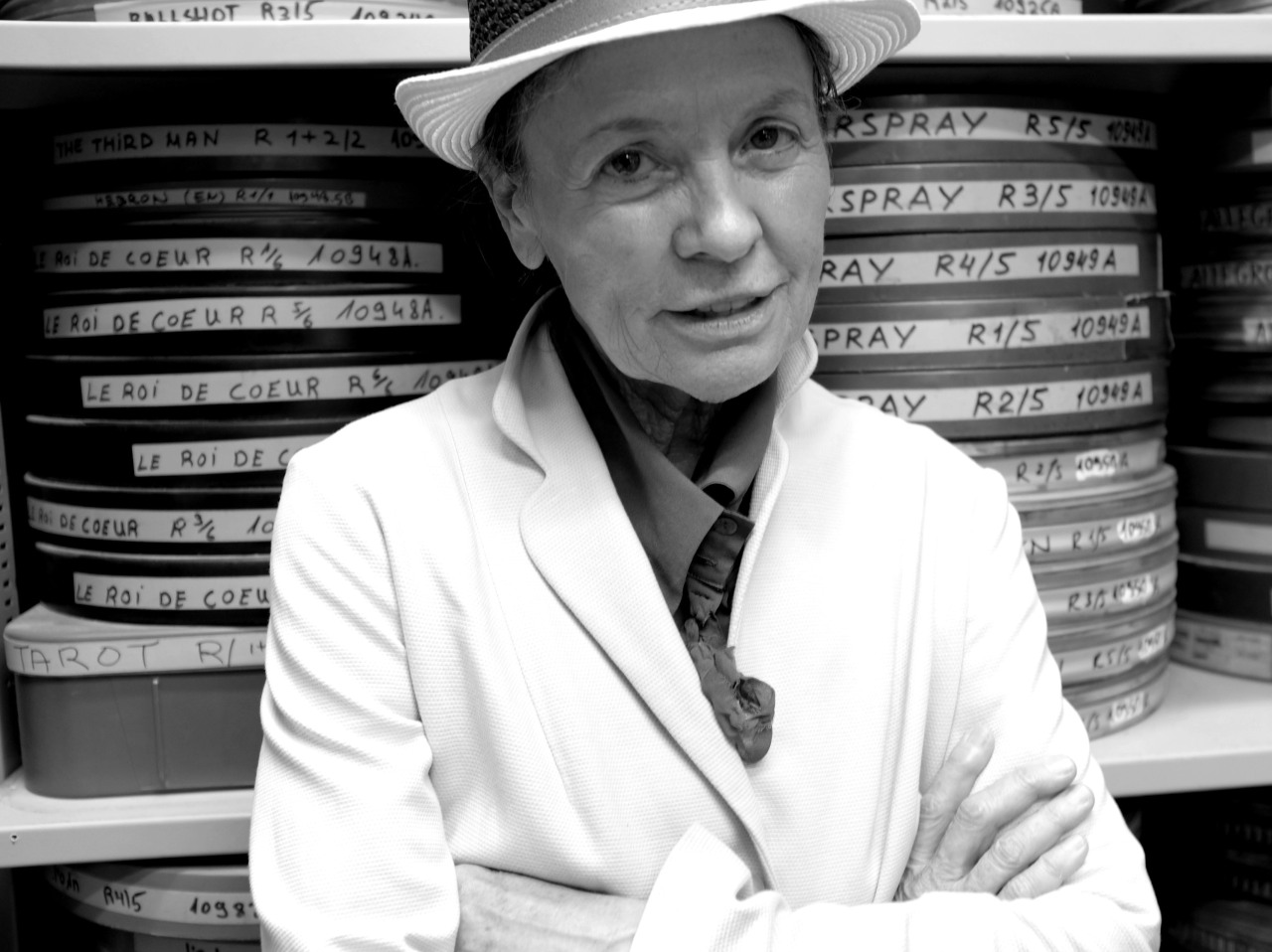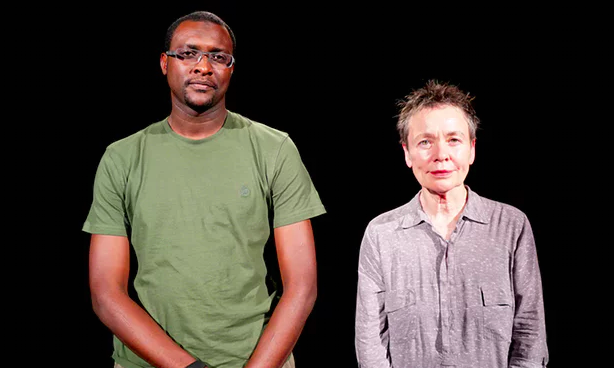Anderson has been producing avant-garde work since the 1970s. In 1981, her song "O Superman” topped the international charts. Working with a range of overlapping media, Anderson examines the role of technology in music, art and society, and its use as a tool of power. In a powerful act at the end of the 1990s, Anderson collaborated with the San Vittore prison of Milan to create Dal Vivo, a work in which she projected a “fake hologram” of an inmate condemned to 30 years of incarceration on the wall of the Prada Foundation. She had attempted to stage the performance in the States, but found it to be impossible due to the private prison system in America.
The question posed here concerns, of course, the loss of identity inmates undergo within the prison system, and the ensuing loss of ownership over their images.

Laurie Anderson © Anne Maniglier
When she created Habeas Corpus at the Armory in New York several years later, Anderson gave a voice to a young Saudi, Mohammed El Gharani, imprisoned in Guantanamo without the slightest evidence for eight years, and now forbidden from ever entering the U.S.
In 2015, after many months of research and video recording in Africa, Anderson transported the image of El Gharani, one of the youngest ever detainees at Guantanamo, to the Armory’s Park Avenue gallery. A silent video projection mapped El Gharani’s image onto a sculpture of a seated human form that stood at one end of the Armory’s central hall, invoking the Lincoln Memorial in Washington. The famous words inscribed on Lincoln’s effigy — which refer to the president’s efforts to abolish slavery in the United States — take on a dark irony in the context of the State-sanctioned practices of Guantanamo:
AS IN THE HEARTS OF THE PEOPLE
FOR WHOM HE SAVED THE UNION
THE MEMORY OF ABRAHAM LINCOLN
IS ENSHRINED FOREVER”
El Gharani told his own story: that of a young Saudi boy who was studying to become a computer technician in Pakistan when he was sold out to the Americans during the raid of a mosque, wrongly believed to be on a list of known terrorist haunts.
The American government shows no hesitation in changing the rights accorded to adult prisoners, and even to incarcerated minors, removing protections, making it legal for people to be arrested without evidence, and systematically using torture and intimidation. In the same vein, prisoners are categorised as non-humans on arrival at Guantanamo; their rights are withdrawn and they have no recourse to reparations. They are labelled as manipulative and self-destructive people in order to mask the detention camp’s extremely high suicide rate.

Mohammed El Gharani & Laurie Anderson
Guantanamo prison guards are given special training, including pilgrimages to Ground Zero in New York as part of a carefully crafted propaganda campaign. El Gharani was tortured and intimidated throughout the entirety of his incarceration at Guantanamo, and spent the first six months not even knowing where he was.
The fact that there are surveillance cameras in every cell only serves to further undermine the prisoners — proving that violence at the detention camp has reached unprecedented levels.
Habeas Corpus encourages spectators to become aware of the acts and the faults of their government, which has established a system that is in fact not so far removed from slavery.
It has also encouraged Mohammed El Gharani to speak out for all those prisoners without rights who are still in Guantanamo, and to highlight the serious failings of successive governments, and has allowed him to explain that his guilt was never proven and that after all these years he just wants one thing: a public apology — something that remains very unlikely.
For artist Laurie Anderson, the truth is revealed gradually to spectators as Mohammed talks of his life and his experiences. She recalls that at the beginning it was very difficult to get the idea of the ground, as people around her were very cautious and that after the 'Patriot Act' there was a real sense of fear of being labelled as one of those thought to represent a risk to society.
But whilst Americans may be spied on, and sometimes intimidated, foreigners are tortured and disappear, leaving behind open wounds in their own communities.









